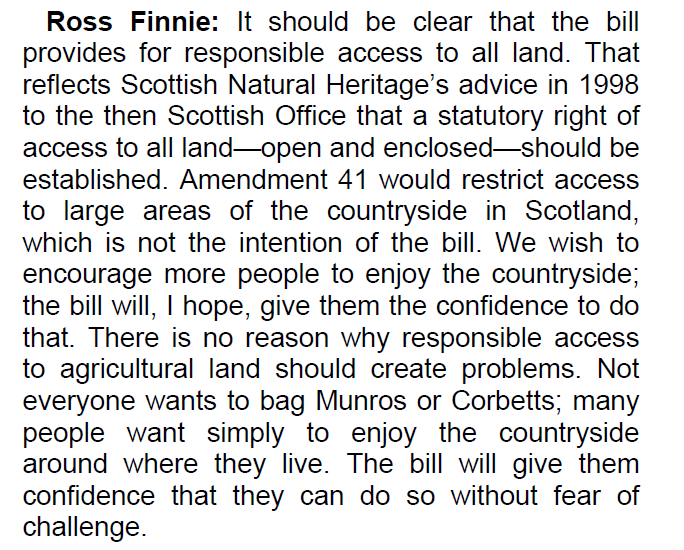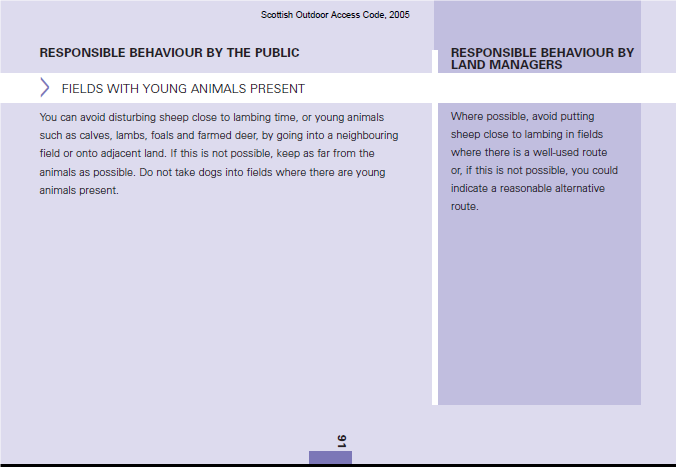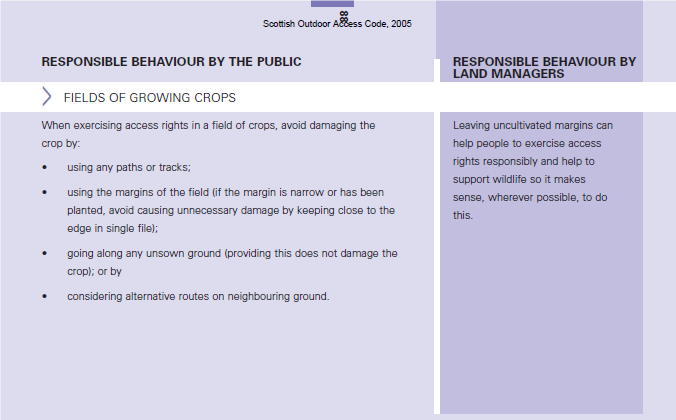With lockdown in Scotland continuing for a while yet the opportunities for visiting our national parks will be limited for many people. So, as we focus more on local access, it is essential that everyone has a clear understanding of what those opportunities are, from front door and gate. Our “right to roam”, a term frequently used by outdoor enthusiasts, politicians and the media, is simply a popular description of Part 1 of the Land Reform (Scotland) Act 2003 which established public rights of access to most of our land and water. These rights, which reflected well known customs and traditions, secured a liberty or freedom to take access by clarifying the basis for public access to land and water and by laying duties on various public bodies to protect those rights. The Act requires those exercising access rights to do so “responsibly” and lays reciprocal obligations on land owners who have a duty to use and manage land in ways which respect access rights. The Act also provides for the production of a Scottish Outdoor Access Code, for approval by the Scottish Parliament, with comprehensive guidance on how to take access and how to manage access in ways which are responsible (see here for full approved Code).
In general access rights can be exercised over the first field, wood, golf course or other green space nearest to everyone’s home. Of course many people will chose to use local path networks to walk or cycle from home, but access rights will usually extend to much of the land on either side. This is very important during Covid – 19 restrictions. Taking physical exercise in the outdoors is essential to maintain health, enjoy the fresh air and sunshine, and experience our natural environment. For example, in a recent letter to the Herald newspaper, I explained the significance of field margins for public access and why the Scottish Parliament was determined to ensure that access rights applied to the margins of all fields in Scotland:

Anyone who wants to study in more detail the reasons why MSPs legislated in this way can examine the records of the Scottish Parliament, starting with the Justice 2 Committee Report, 18 Sept 2002, columns 1738 to 1747 (see here). As illustrations of this:
“There is a relatively successful co-existence in the countryside between agriculture in all its forms and the exercising of recreational access. For example, farmers regularly leave tractor tracks through crops as a result of spraying or other operations. Ramblers successfully use those tracks to walk through fields without damaging the crops.”
(Stewart Stevenson (Banff and Buchan, SNP column 1738)
“Access rights can be exercised on paths across fields, on tramlines and around field margins, irrespective of where crops are growing”.
(Allan Wilson, Labour, Deputy Minister for Environment and Rural Development column 1742)
Then, after further consideration, in the final Scottish Parliament Stage 3 debate, 22 Jan 2003 (columns 14225 to 14237) (see here), Ross Finnie (Lib Dem) speaking on behalf of the Scottish Government, succinctly expressed what became the position of the overwhelming majority of the Scottish Parliament:


In the immediate future everyone should be confident in exercising their access rights in the fields near their home. Of course there are some situations, especially at this time of year, when these rights should not be exercised – for example when the farmer is spraying chemicals or fertiliser in the field. And the Scottish Outdoor Access Code makes it very clear (page 91) that you should not take dogs into any field where young animals are present.

But, with access rights applying to all fields, it should be straightforward to find an alternative route through nearby fields.

My letter does, however, explain that, in the management of field margins, most farmers appear to have failed to follow the Code advice, over the last 15 years, and leave uncultivated ground to facilitate access and provide wildlife habitat. We can expect this situation to be corrected in the coming years as a combination of new regulations and subsidy arrangements are put in place following the UK’s departure from the European Union. In future farmers can only expect to be paid public subsidy for delivering public benefit. Field margins provide a great opportunity for developing straightforward management schemes to promote tree planting, wildflower habitat and grass strips, creating ecological corridors throughout our lowland landscapes. Walking and riding around our field margins will then become even more enjoyable as Scotland’s land reform agenda moves onto the next stage. Restoring biodiversity, ensuring effective pollution control and climate change mitigation will run in parallel with public access through all our fields, from near home to the far horizon.
